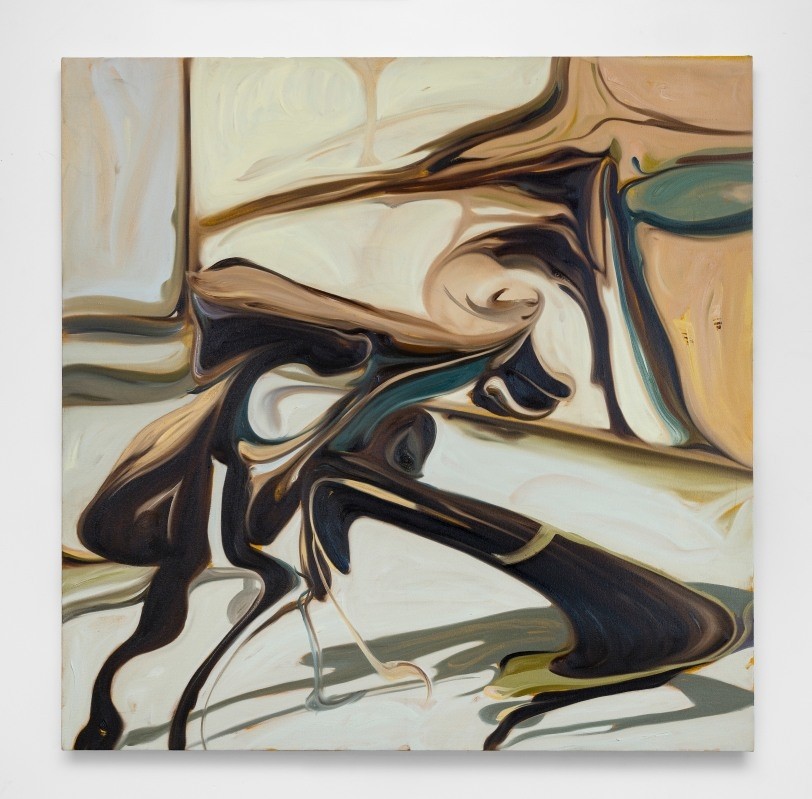
Frieze Los Angeles Booth E9
Roberts Projects returns to Frieze Los Angeles, where the gallery will present a curated selection of works that use a wide range of cultural and historical mythologies as a potent aesthetic lexicon for addressing our existential realities. New and recent works by contemporary artists—including Luke Agada, Amoako Boafo, Daniel Crews-Chubb, Lenz Geerk, Suchitra Mattai, Wendy Red Star, Betye Saar, Kehinde Wiley and Brenna Youngblood—reinterpret mythic imagery to create new constellations of personal meaning and cultural memory.
A highlight of our booth is Betye Saar’s installation featuring the mixed-media assemblage works Critter Chair: The Seat of the Spirit (1990) and Fragments of Fall (1989), which conceptualize myth and spirituality as tangible forces of nature. Originally shown in Sanctified Visions at MOCA, Los Angeles in 1990 and Sanctified Visions II at UCF Art Gallery, Orlando in 1994—which drew inspiration from the life of American writer and folklorist Zora Neale Hurston—this installation constructs an immersive environment out of moss and corrugated sheet metal that recreates elements from Hurston’s childhood home. A motorized child’s rocking chair brings a kinetic energy to the space and reinforces the profound anthropological mission shared by Saar and Hurston: to examine and record the rich, longstanding rituals of African American history and culture. With Saar approaching her 100th birthday in 2026, the 35th anniversary of her MOCA installation serves as a powerful embodiment of what the artist describes as the “relentless ticking away of years.”
Through photography, sculpture, video, fiber arts and performance, Wendy Red Star’s work emphasizes the importance of Apsáalooke (Crow) cultural practices and knowledge transmission, especially within her own family and community. Her rigorous research and focus on archival materials allow her to bring forward underrepresented aspects of Apsáalooke history, often intertwining with and critical insight to challenge dominant narratives. Red Star will debut a new, site-specific work created especially for the fair. Evening Star #1 (2025) features two mirrors positioned at a 90-degree angle, reflecting a star quilt pattern crafted from earth pigments in rich shades of blue and red, inspired by Apsáalooke women’s rawhide paintings and quilting techniques. The mirrors create an immersive experience, blurring the line between earth and sky, reality and illusion, while inviting viewers to become part of the artwork. Red Star is a recipient of the 2024 MacArthur Fellowship.
As if mapping the blurred and sinewy terrain of his psyche, Luke Agada paints in pursuit of visualizing the “third space”: an internal precipice at which interdependent forces of anxiety, bravery, stability, chaos, survival and collapse must be wrestled with. Through a combination of oil paintings and charcoal drawings on canvas, the artist translates his individual study of complex sociopolitical systems into chimerical visions of migratory bodies.
Combining a variety of techniques including finger-painting and collaging on the surface of canvas, Amoako Boafo's portraits of friends, acquaintances and people from public life present a contemporary image of Black self-empowerment and self-perception that references the historical and political dress codes of Black visual culture. Best known for his vibrant paintings of Black and Brown individuals from the diaspora that subvert the hierarchies of Western art history, Kehinde Wiley will present a new painting at this year’s fair.
For nearly ten years, Daniel Crews-Chubb has centered the figure in his work, using it as a flexible motif that blends ancient references to Aztec deities and Hindu gods with more recent art historical influences, including Cubism, Abstract Expressionism and the CoBrA movement. His figures, whether solitary or in groups, are intentionally devoid of defining features that might tie them to specific races, genders or cultural identities.
Suchitra Mattai’s under the same rain (2025) is a profound exploration of identity, heritage, and the interconnectedness of humanity. Drawing from her Indo-Caribbean roots, she combines traditional craft-based processes, such as weaving with materials like beads and saris, and contemporary practices to replace colonial narratives with empowered brown heroines, reclaiming patriarchal histories. By embedding ancestral memory within the natural cycles of death and rebirth, Mattai creates a work that honors cultural lineage while asserting art’s enduring power to reimagine history.
Originally trained as a photographer, Brenna Youngblood integrates photomontage and collage methodologies to construct the complex surfaces of her paintings, engaging critically with the aesthetics and politics of abstraction. Her practice acknowledges the legacy of assemblage, utilizing found objects and materials to “make something new out of something old.” In her later works, Youngblood’s approach to abstraction incorporates architectural and social references, producing painterly, gestural compositions she refers to as “landscapes.” Her oeuvre frequently engages with political and social issues, addressing themes of Black American identity and representation through historical and cultural allusions to moments in Black history. Youngblood’s forthcoming solo exhibition, R.A..D…I..O., is scheduled to open at Roberts Projects in March 2025.
Seen as a whole, this presentation upholds myth-making as both a crucial act of creative self-determination and a collective challenge to social hierarchies of value.